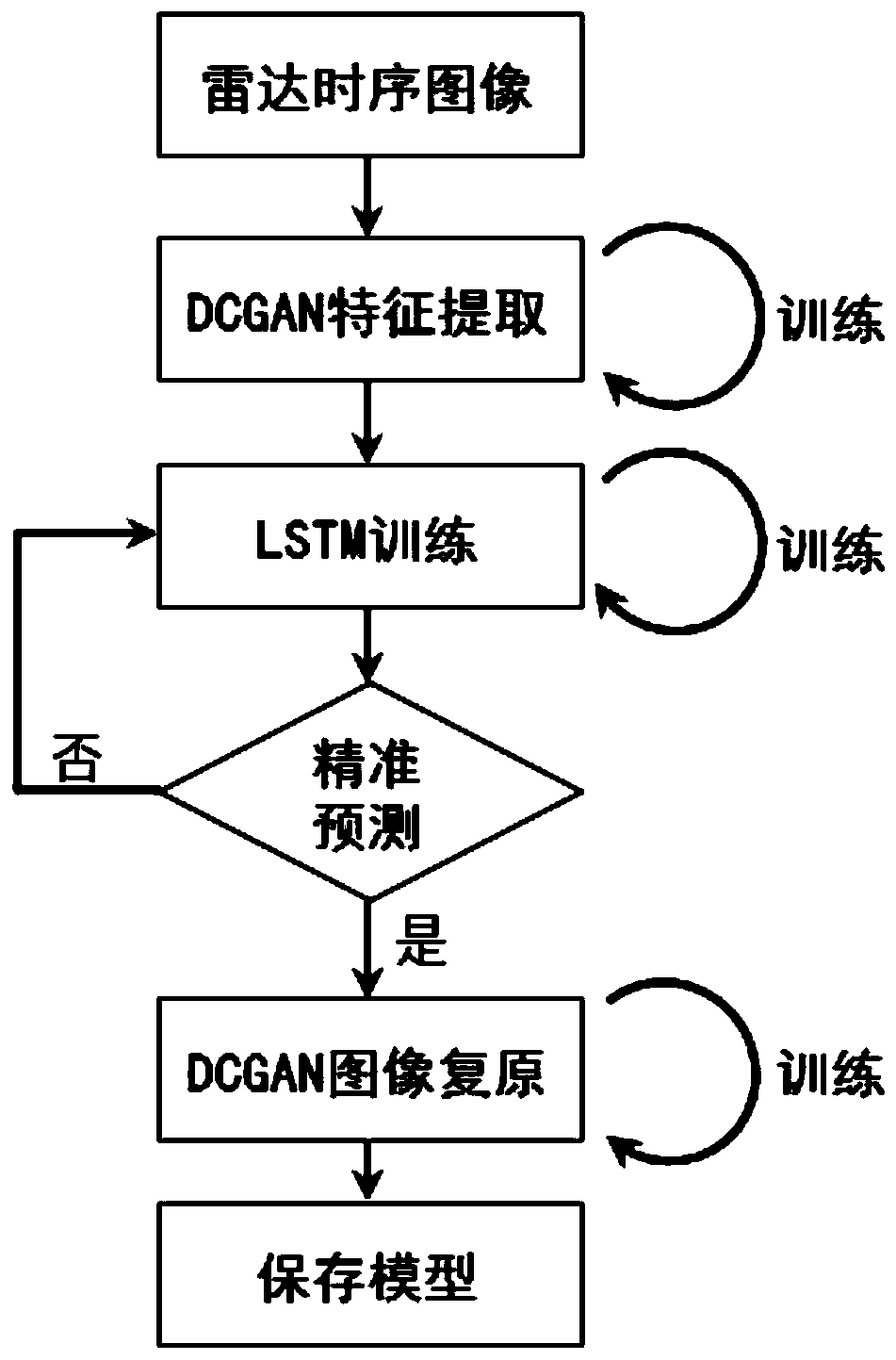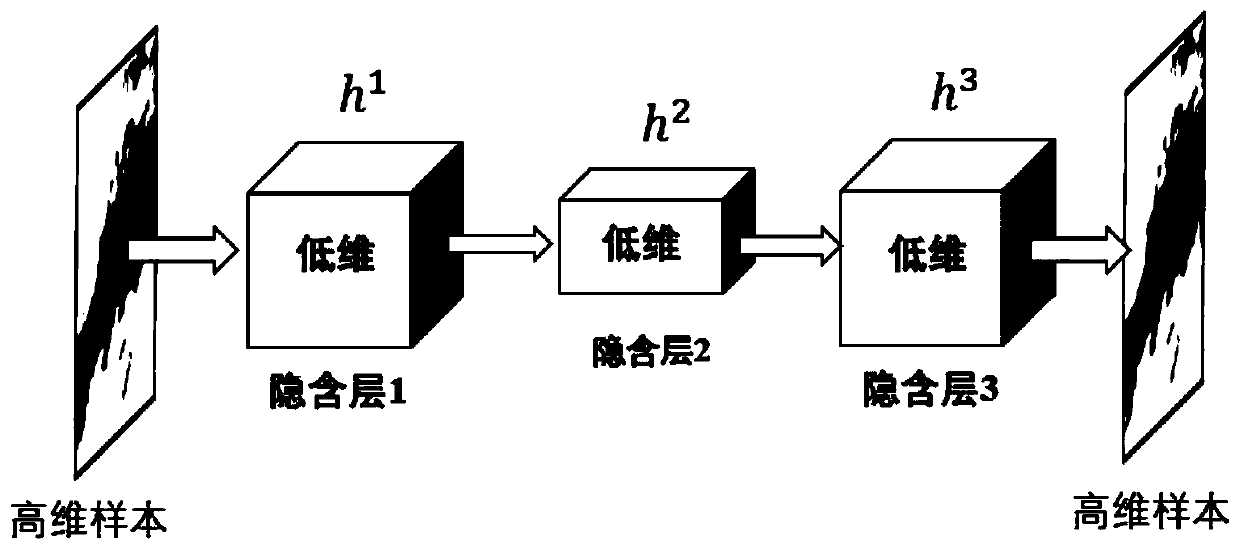sequential image prediction method based on LSTM and DCGAN
A prediction method and time series prediction technology, applied in neural learning methods, character and pattern recognition, instruments, etc., to achieve accurate prediction, solve high-dimensional incomputability, and reduce feature dimensions.
- Summary
- Abstract
- Description
- Claims
- Application Information
AI Technical Summary
Problems solved by technology
Method used
Image
Examples
Embodiment Construction
[0029] The technical solutions of the present invention will be further described below in conjunction with the accompanying drawings and embodiments.
[0030] The temporal image prediction method based on LSTM and DCGAN of the present invention comprises steps:
[0031] (1) Construct a DCGAN encoder, including an encoding module and a decoding module, and an LSTM network for learning temporal images is connected between the two modules to predict the feature distribution;
[0032] In the encoding module, a network structure of four-layer convolution and four-layer downsampling is designed; in the decoding module, four-layer deconvolution and four-layer upsampling are used; the LSTM network for learning time series images is connected between the two modules to predict features distributed. Such as figure 1 As shown, first collect images and input them into the encoding module to extract spatial features; input the extracted features into LSTM for prediction, and pass the pr...
PUM
 Login to View More
Login to View More Abstract
Description
Claims
Application Information
 Login to View More
Login to View More - R&D
- Intellectual Property
- Life Sciences
- Materials
- Tech Scout
- Unparalleled Data Quality
- Higher Quality Content
- 60% Fewer Hallucinations
Browse by: Latest US Patents, China's latest patents, Technical Efficacy Thesaurus, Application Domain, Technology Topic, Popular Technical Reports.
© 2025 PatSnap. All rights reserved.Legal|Privacy policy|Modern Slavery Act Transparency Statement|Sitemap|About US| Contact US: help@patsnap.com



